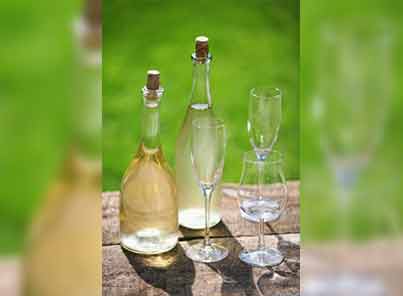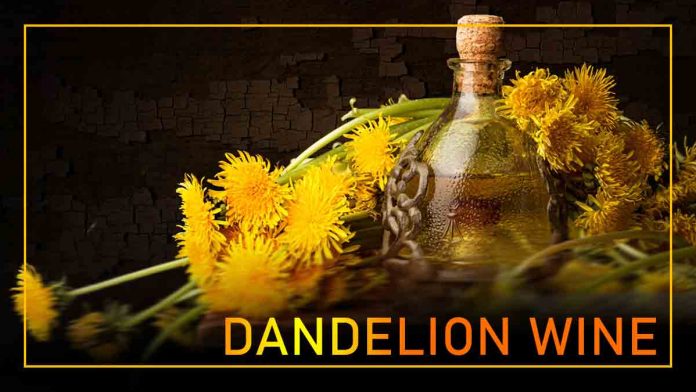
A drink smelling of fields, meadows, gentle gusts of wind, spring freshness… What is it?
It is a dandelion wine that has preserved the power of early summer, the bright rays of the sun that awake us, nature, and everything around us.
In the sip of this drink, you will find everything – a delicate aroma of herbs. On the palate, you will feel the aftertaste of nutmeg intertwined with a slight hint of lemon, sweetness, and a sip of a good mood.
Who tasted dandelion wine – will not forget the taste for a long time. Taste this drink slowly without rushing.
When you decide to get ready – arm yourself with patience and come to terms with the idea that you will have to wait a long time for the final result.
A couple of hundred years ago, Dandelion wine was even more popular than grape wine. It was later forgotten and supplanted by grape wine, which is easier to produce and probably cheaper.
You might like: Health Benefits Of Dandelion Flower: Heals The Skin, Helps To Lose Weight, Protects Against Cancer
How To Make A Dandelion Wine
Dandelion wine has been around for about as long as there have been dandelions and winemaking – so it’s no surprise there are about a gazillion ways to create it.
However, most recipes use very large quantities and call for removing the petals from the dandelion flowers.
This recipe is different. Not only is the quantity small (about enough to fill a gallon jug), but it saves a ton of time because you don’t need to remove the petals from the flowers.
The process is also about as simple as you can get, making it a great choice for beginning winemakers.
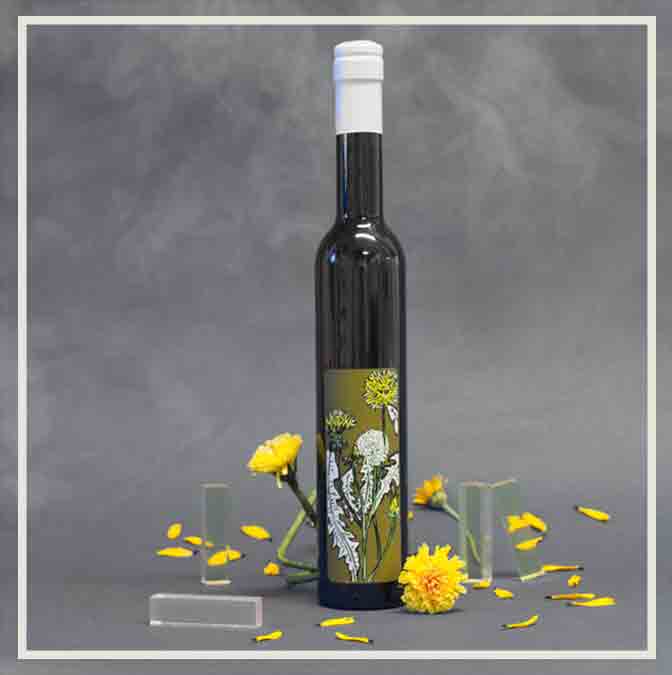
A Few Notes on Making Easy Dandelion Wine:
- Be sure to collect dandelions you are 100% sure have not been exposed to chemicals (like weed killers).
- Collect only dandelion flowers. It’s fine to keep the green leaves (sepals) at the base of the petals, but don’t include any stems.
- Choose only fully opened, fresh flowers. Avoid partially-opened blooms or blooms that are wilted or are turning brown.
- It’s fine to freeze dandelion flowers until you have enough to make wine. However, measure the flowers before you freeze them, not after.
- Use wine or champagne yeast, or your wine will end up way, way too sweet. Regular baking yeast dies before it can fully eat up the sugar in this recipe. Wine or champagne yeast lives longer and eats up more of the sugar.
- You’ll need something to help you cap or cork your bottles.
You might like: How To Make A Dandelion Root Tea. Feel The Medicinal Value Of This Forgotten Plant.
Dandelion Wine Recipe
- 8 cups dandelion flowers
- 1 gallon boiling water
- 9 cups granulated sugar (you can experiment by using less)
- juice from 4 oranges
- juice from 3 lemons
- 2 1/4 teaspoons (1 packet) wine or champagne yeast
- 1/2 cup lukewarm water
- Large, non-reactive pot with lid
- Mixing spoon
- Colander
- Small bowl
- Funnel (I used a new, never used car oil funnel)
- 1-gallon glass jug
- Balloon
- Fine mesh strainerWine or beer bottles with new corks or caps
How to Make Dandelion Wine, the Easy Way:
- Pour the dandelion heads into a large, non-reactive pot. Pour 1 gallon of boiling water over the flowers. Cover with the pot lid and steep for two days.
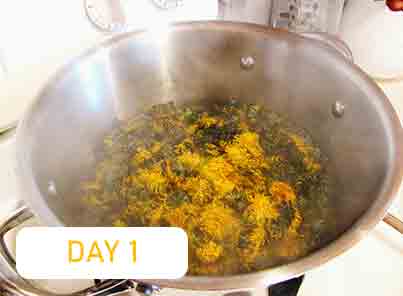
Steeping dandelions. 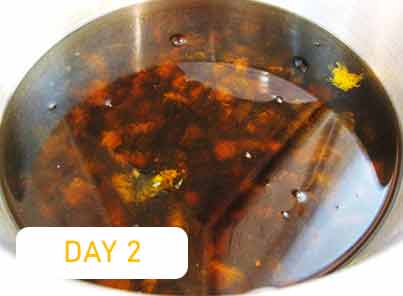
After two days, the steeped dandelion will look like this - Place a colander over a large bowl and strain the flour mixture. Reserve the liquid, but discard the dandelion flowers.
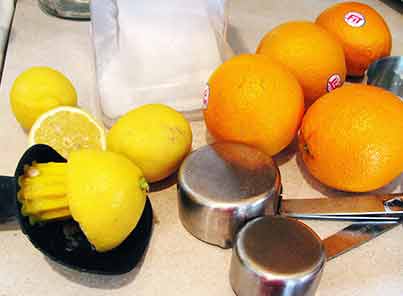
Add some citrus for better dandelion wine - Clean the pot so no trace of dandelions remains. Pour the liquid into the pot. Stir in the sugar and citrus juice.
- In a small bowl, dissolve the yeast into the lukewarm water, stirring a couple of times to combine.
- Pour the yeast mixture into the dandelion mixture and stir until sugar is completely dissolved.
- Place the funnel in the jug and pour the liquid into it.
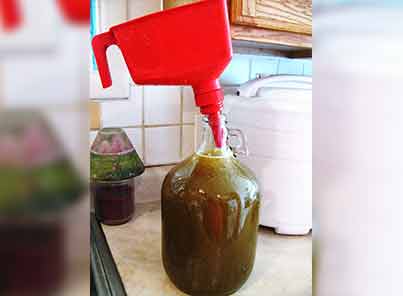
The funnel in the jug - Cover the jug’s opening with a balloon, to prevent bugs, dust, etc. from getting into the wine. Store in a dark location until the mixture stops fermenting.
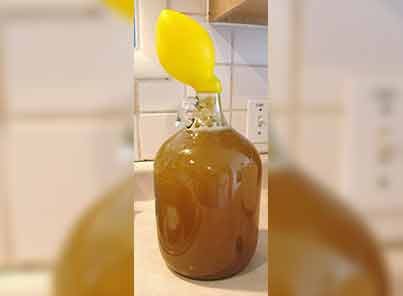
Dandelion wine fermenting in progress - Keep an eye on the balloon for a few days. If it grows quite large, lift up part of the balloon end, releasing the gas. After about 5 weeks, the balloon will probably be only slightly inflated. Release the gas from it periodically; when the balloon stays deflated for one or two days, the wine is done fermenting and is ready to bottle. (Don’t bottle before this time, or you risk having your bottles of wine explode!)
You might like: Beware! There Are Everyday Products That Might Kill You One Day. [Toxic Food Poster]
Strain through cheese cloth until you are satisfied with the clarity of the wine. Funnel into bottles and cork or cap. For best flavor, allow the wine to sit in a dark, cool location for at least 6 months. As the wine ages, it will become lighter in color.
I can’t show you my dandelion wine all bottled up yet because it is in the final stages of fermenting. But once it’s bottled and aged, it should look something like this:
